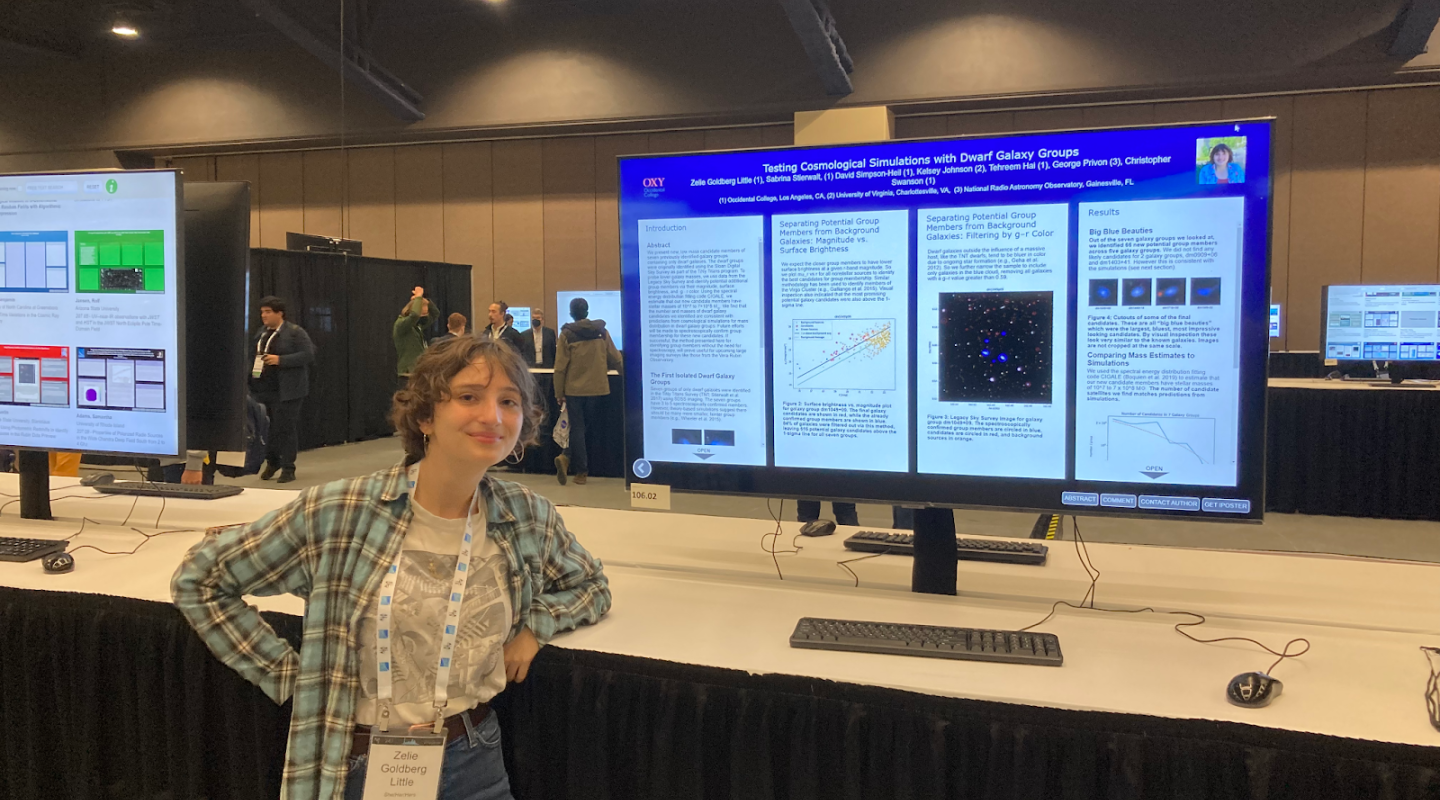As a sophomore double majoring in Physics and Media Arts & Culture (MAC), Zelie Goldberg Little knew she wanted to do research, but was surprised to find an opportunity was just an email away.
When I first started doing research last summer I knew it was right up my alley. I was originally drawn to Occidental by the allure of doing undergraduate research, but I still did not expect I would already be spending my summers down in a lab right after my first year here. I’m a physics major doing observational research on dwarf galaxies, and although I was working with unfamiliar astronomy concepts, my mentor, Assistant Professor of Physics Sabrina Stierwalt, provided me with more than enough resources to gain a good understanding of the forces at play.
I almost didn’t sign up to do research at all. I had never talked to Professor Stierwalt before, so I figured that by December she’d have already picked out her researchers for the summer and a cold email would lead to nowhere. I don’t really know why I was so resistant to writing that email when the worst thing that could happen was being told “no”, but after pressure from my family and days of working up the courage to overcome my irrational anxiety, I sent the email.
I’m so glad I sent that email. Doing research is so different from the classroom environment, and I learned so much organically on the job. A couple years prior I had taken a computer science course, but I taught myself python that summer as a tool for analyzing and filtering my data. Looking at telescope images, I was also transfixed by the beauty of the cosmos. The motivation and excitement I felt for my research were like nothing I’d ever experienced before, and I immediately knew I wanted to do research for the rest of my life.
So, what’s so enthralling about these dwarf galaxies? We are looking to understand what happens when two smaller galaxies collide to create larger galaxies like our own milky way. But it takes billions of years for galaxies to collide, so we can’t watch this play out in real-time. Instead, we need to search for dwarf galaxy groups using images from telescopes which serve as snapshots of a mid-collision moment in time, and then analyze the nature of these groups and compare it to theory-based simulations. Last summer I identified 66 new candidate members of seven galaxy groups previously identified by Professor Stierwalt and found that the mass distribution of these candidates is so far in line with simulations.
Then this January I got to present my research at the annual winter meeting of the American Astronomical Society, or AAS for short. I presented a poster, which meant I got to have in depth discussions about my research with professional astronomers who stopped by to check it out. I got a lot of valuable feedback I’m excited to implement this summer!
Sharing my research with other astronomers also made me feel like I was a part of something bigger than myself. While I was presenting my poster, a couple of people came up to me who had specifically sought my poster out, because they were particularly excited about the work I was doing. This was an amazing feeling because it made me feel like my research had an impact. Working in conjunction with the discoveries of others, I feel excited to do research that can expand astronomical understanding. When I do research or present my findings, or even just talk about space, it makes me feel happy because I am so proud of what I can accomplish and cannot wait to see what the future has in store.
Learn more about undergraduate research opportunities at Occidental College here.

